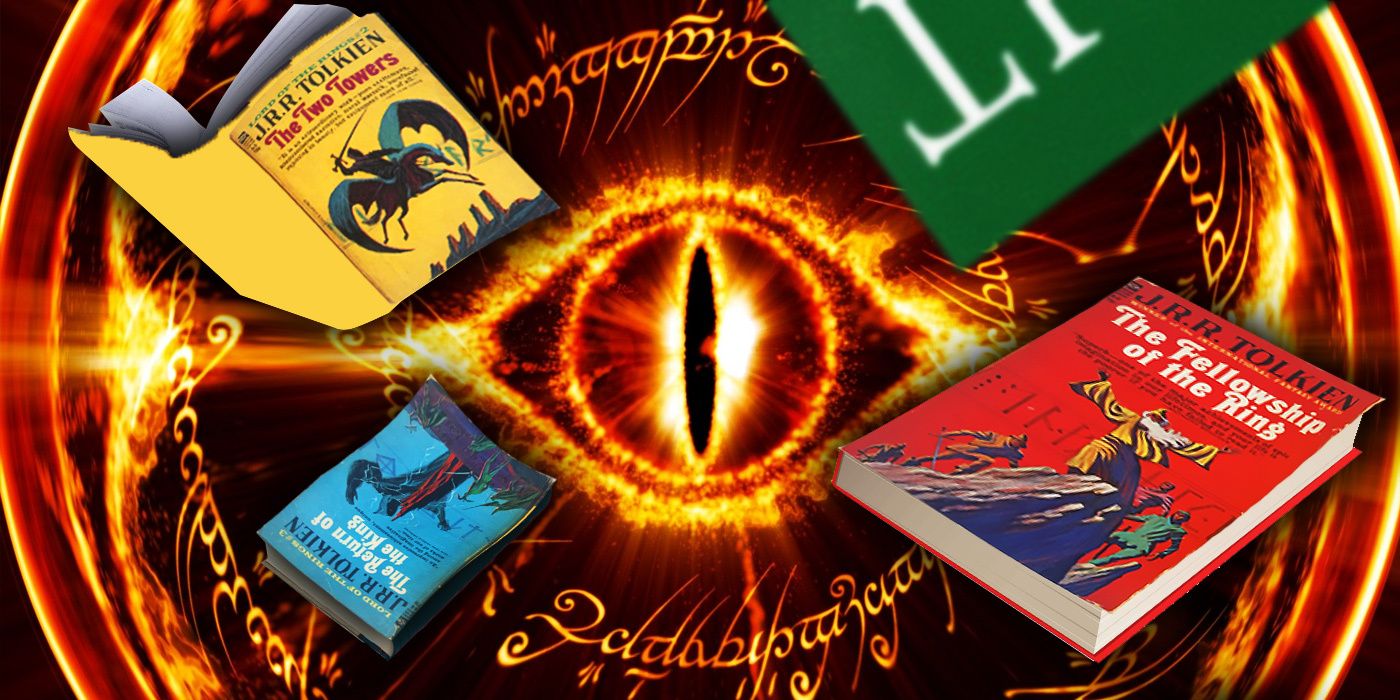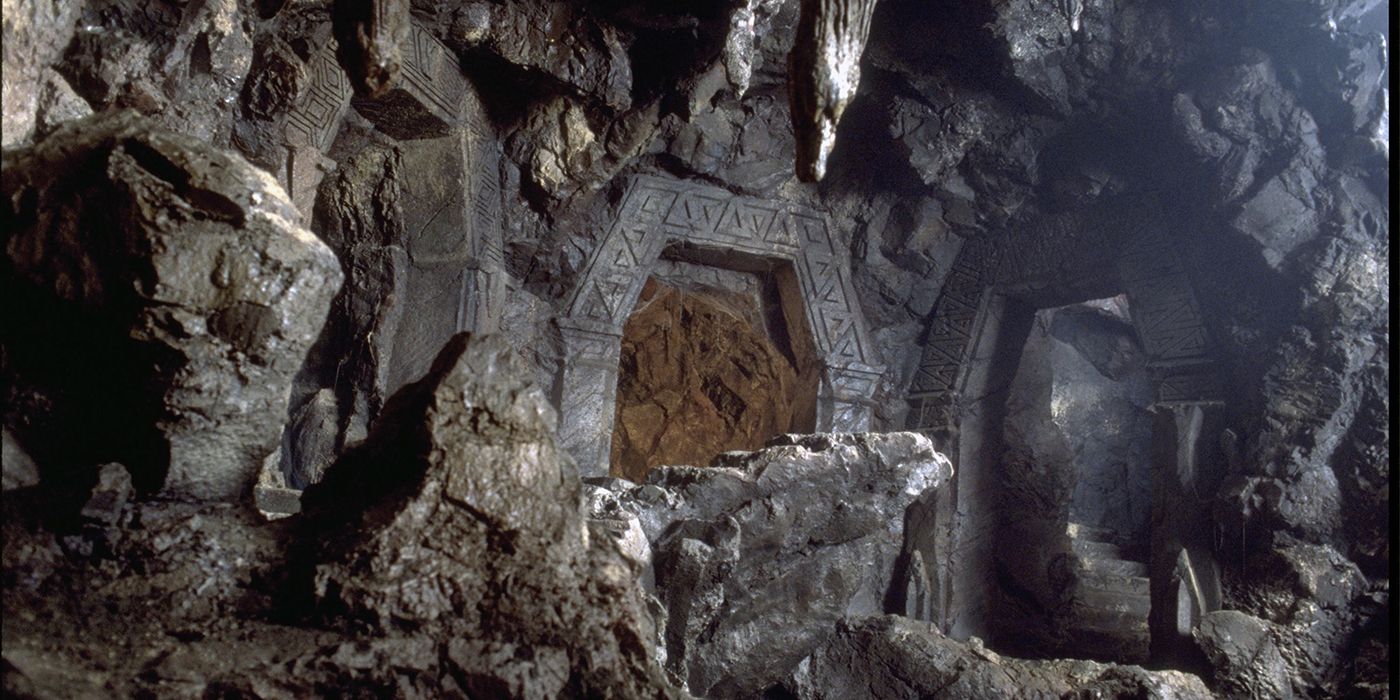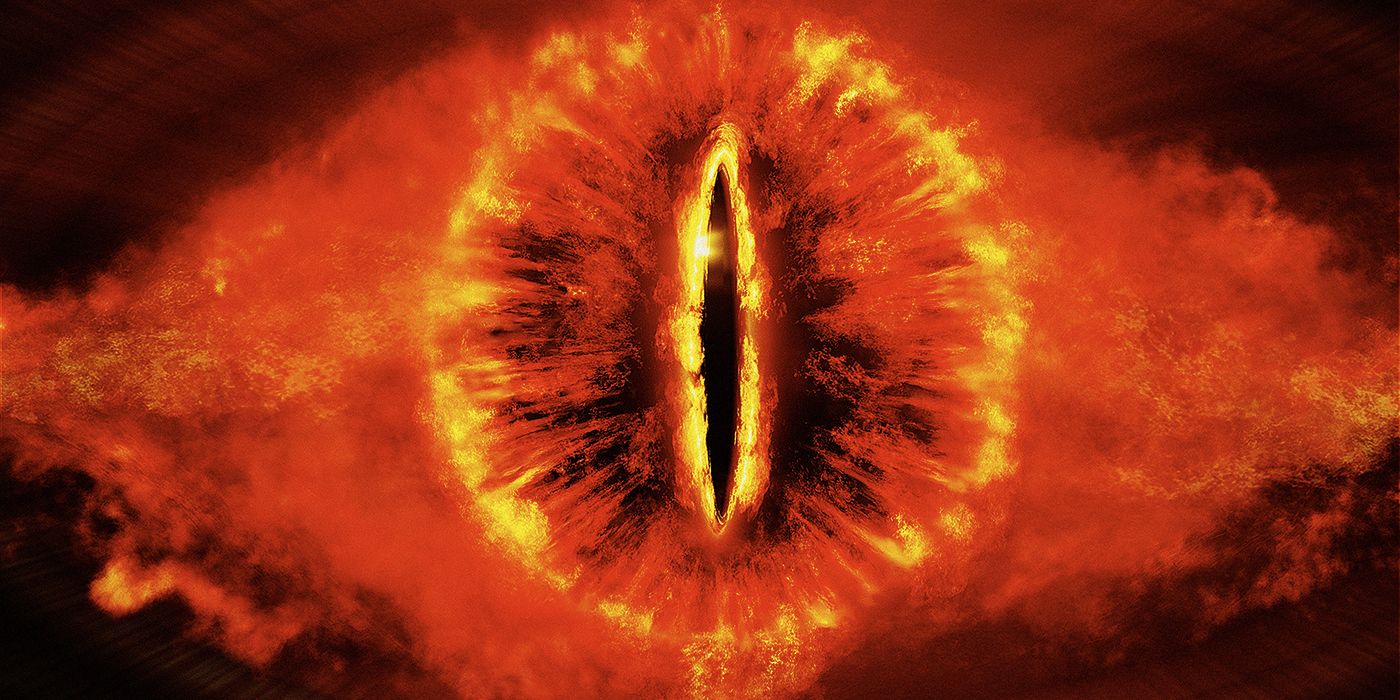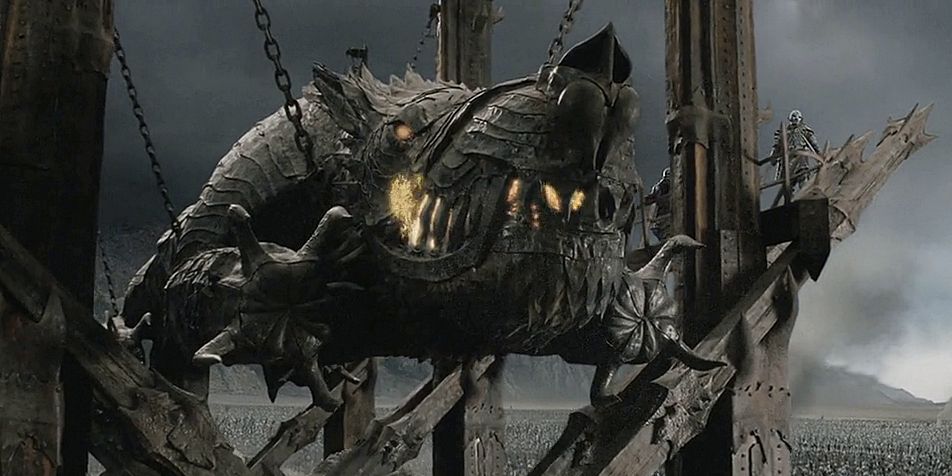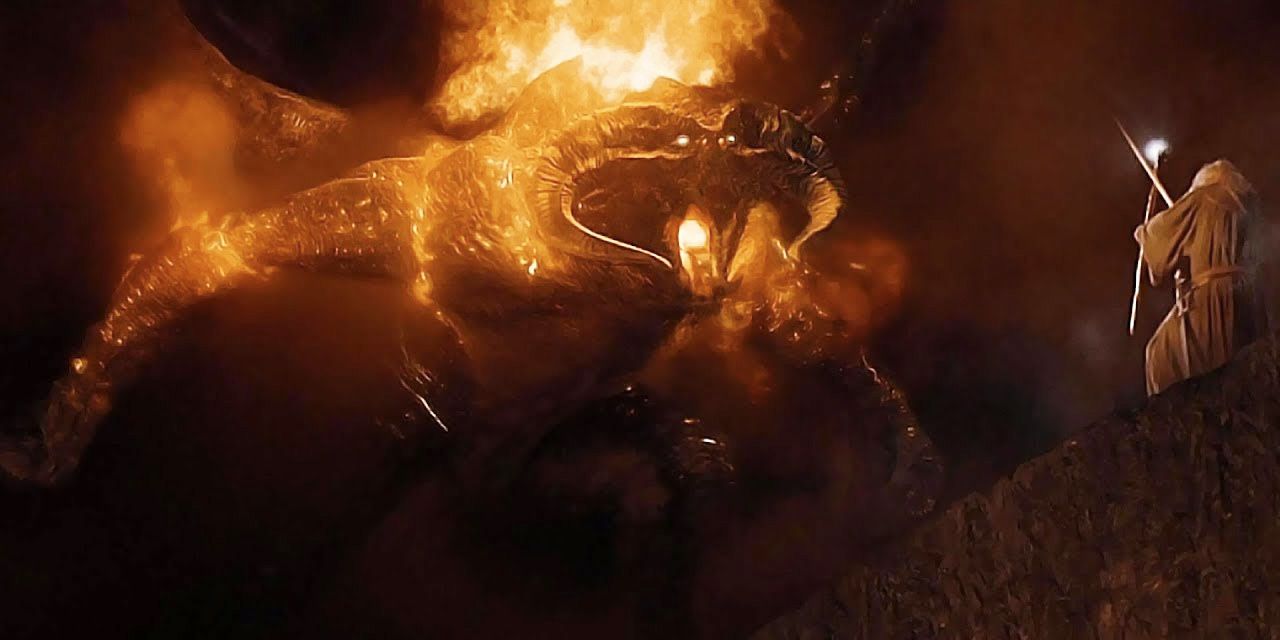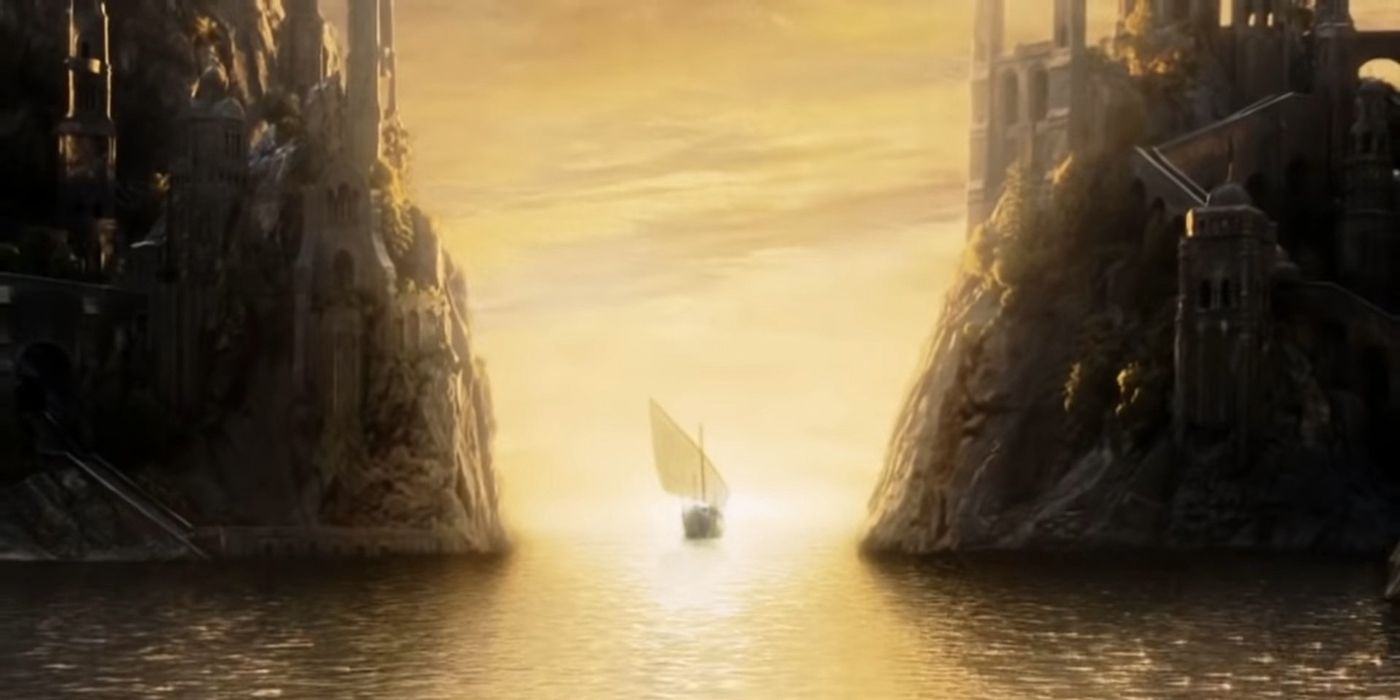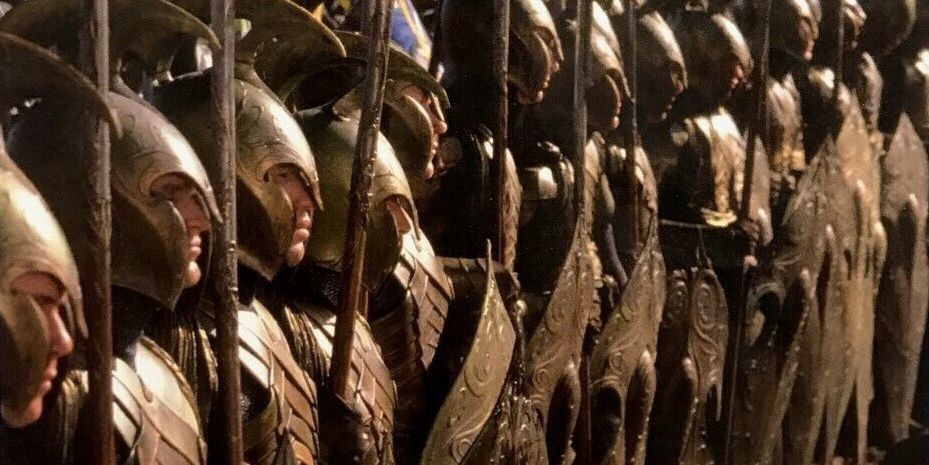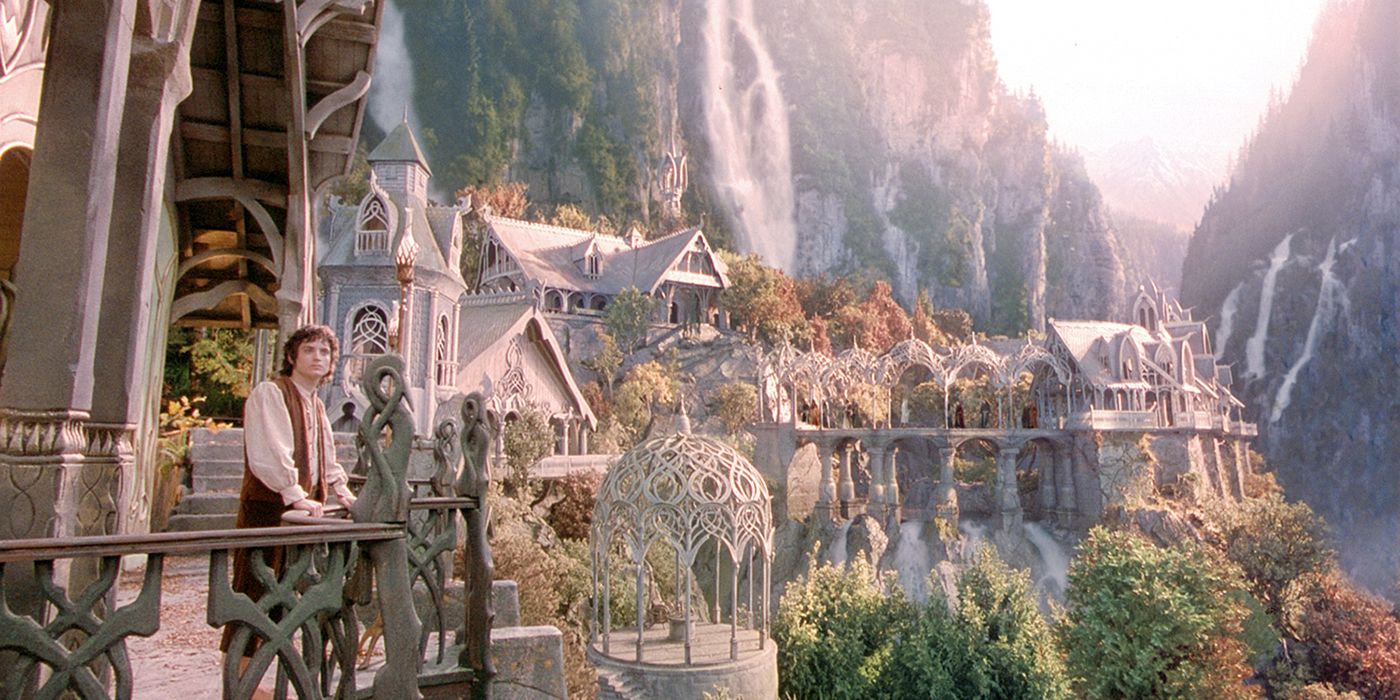The world of Middle-earth in J.R.R. Tolkien’s books has been a constant source of fascination to generations of readers and viewers ever since The Hobbit was first published in 1937, and the interest in creating a version of that world suitable to the screen has been present for decades, with Tolkien himself critiquing a number of movie scripts during his own lifetime and a slew of projects coming to life after he passed away in 1973. From Ralph Bakshi's (and later Rankin/Bass) animated The Lord of the Rings movies to the failed attempts of both John Boorman and The Beatles, there was clearly concerted interest and effort in bringing the world of Middle-earth to the big screen.
The live-action Peter Jackson trilogy, however, was the first to go beyond animation and bring the stunning scenes and setpieces of Tolkien’s world to life on the big screen for the first time. The use of the breathtaking mountains and plains of New Zealand, combined with the masterful work of visualization accomplished by Weta Workshops, set the tone for the trilogy that won the Oscar for Best Visual Effects three years in a row. While the subsequent The Hobbit trilogy does not hold up as well as The Lord of the Rings in terms of cinematic quality, the visualizations are still stunning, from the quiet of Hobbiton to the Lonely Mountain and the most magnificent dragon ever put on screen. The new Amazon TV series promises to do more of the same, being so dedicated to excellent visual effects that they reportedly even hired someone whose job is exclusively to study how dust moves in response to breath and footfalls.
With the continued interest in visualizing Tolkien’s world only increasing as the advent of the new series approaches, it is appropriate to take a look once more at the wide world of Tolkien to see the sort of scenes and set pieces that are aching to be put on the big screen, and that we all might someday get to see.
The Thousand Caves of Menegroth
One of the greatest accomplishments of The Lord of the Rings trilogy was in the way that it visualized the artwork and architecture of different cultures and peoples. Rohan has decorative artwork in scrolls and knotwork on weapons and mead halls. The elves of Rivendell and Lothlorien are characterized by their elegant woodwork and sloping arcs and curves in vaulted ceilings and doors. The dwarf kingdom of Khazad-dûm and the later visualization of the halls of the Lonely Mountain are typified by sturdy geometric lines and hard angles from the support columns to their armor and weapons.
In the First Age of Middle-earth, however, the elf kingdom of Doriath became home to arguably the most remarkable work of architecture in the world. Urged by his queen, Melian, king Thingol commissioned a great stronghold to be built as the citadel of his realm. For this great work, however, he employed the services of the dwarves, to delve a great palace in caves beneath the earth. What followed, then, became a unique work of architecture: a palace that combined the art and architecture of both the elves and the dwarves. The elegance of elvish architecture came in union with the firm underground strongholds of the dwarves, and any exploration of Menegroth on-screen would consequently be a fascinating melding of the two styles only ever seen in their disparate forms in The Lord of the Rings and The Hobbit.
Elendil and Gil-galad vs Sauron
Given that the upcoming Amazon series will be focusing on the events of the Second Age, this next entry is likely something audiences will actually get to see later on in the series. The Second Age ends with the war of the Last Alliance and culminates with the events at the beginning of the Fellowship movie: the fall of Sauron and the taking of the One Ring by Isildur. However, in the book, the fall of Sauron does not occur in the way presented in the movie, and the final moments of the Dark Lord actually lend themselves to a far more cinematic climax.
What actually happens in the book is that King Elendil of Gondor and Gil-galad, the last High King of the elves, take on Sauron in a climactic duel on the slopes of Mount Doom. It is in this duel that Sauron kills Elendil and Gil-galad with his burning hands, but is also killed himself, presumably by one of them. Tolkien did not specify, but it seems likely that Isildur cutting the Ring from Sauron’s hand was not the act that defeated him, but rather something done to Sauron’s corpse. Seeing this final duel take place on-screen with the greatest kings of the Free Peoples taking down the Dark Lord of Middle-earth would be an epic ending worthy of a great movie (or TV series).
Fingolfin vs Morgoth
As magnificent as the duel with Sauron would be, there is arguably an even more dramatic duel that occurs in the First Age: that of Fingolfin and Morgoth. Morgoth is the original Dark Lord of Middle-earth, a divine creature fallen from grace but with the powers of a god; Sauron was merely one of his lieutenants. Fingolfin, on the other hand, was the first High King of the Noldor, who after a disastrous defeat in battle rode to the gates of Morgoth’s stronghold and challenged him to single combat.
Fingolfin in his rage was said to look like one of the Valar himself (the angelic order from which Morgoth fell). Morgoth came forth from his fortress bearing Grond, Hammer of the Underworld, after which the great battering ram in Return of the King was named. The blows of Grond left pits in the earth all around, but Fingolfin in his swiftness avoided the blows and wounded Morgoth seven times. Finally, exhausted, Fingolfin stumbled into one of the pits made by Grond, and Morgoth stepped upon him, crushing him to death. In his final moments, he drove his sword into Morgoth’s foot, and the Dark Lord walked with a limp ever after.
The Fall of Gondolin
Gondolin was another of the great strongholds of the elves in the First Age, and its location remained a great secret to all the peoples of Middle-earth for centuries. Morgoth was particularly intent upon finding and destroying it but was unable to do so until the city was betrayed to him by the treacherous Maeglin. What followed, however, was a great battle that any Tolkien fan would love to see finally visualized.
According to the Book of Lost Tales, Morgoth’s assault began after sunset, as an ominous red glow to the north began to grow after the last light of sunset had faded. That scene alone would be enough to build a growing tense foreboding, but it is only the beginning. When the army finally reveals itself, the situation grows direr: there is a host of balrogs riding upon iron dragons, who are wingless but wreathed in fire and spew forth hosts of enemies from their fiery innards.
The entire battle has multiple scenes that would make a satisfying dramatic climax to any story: the balrogs are taken on by the blacksmith Rog and his House of the Hammer of Wrath, who make a valiant assault upon the enemy but are eventually overwhelmed. There is a great showdown between Ecthelion of the Fountain and Gothmog, Lord of the Balrogs, wherein Ecthelion kills Gothmog by ramming him with his spiked helmet, and dies himself in the act. Maeglin is discovered and hurled from the walls; the king and his tower fall into flame; the survivors flee the city and are ambushed by a balrog in the mountains, where the elf Glorfindel locks the creature in battle and both tumble off a mountain cliff to their doom.
Any of these scenes would be dramatic if played out on the screen, but the sequences all together would make one of the greatest battle scenes in the history of cinema.
Numenor Falling into the Sea
In another entry we are almost certain to see in the TV series, the fall of Numenor is a shocking moment that inspires awe in the reading alone. If it were to reach the screen, there is no telling the impact it would have. Numenor itself is a great island set between Middle-earth and Valinor, and the seat of the greatest kingdom of mortals in the world. Its inhabitants are blessed by the Valar with extremely long life, far beyond any other mortals, and by this blessing, they become a great and prosperous kingdom. What happens to Numenor is an act of hubris that has cosmic consequences.
When Ar-Pharazôn, the last king of Numenor, raises an army to take down Sauron in battle, Sauron himself surrenders to the king and asserts Ar-Pharazôn’s superiority, feeding the king’s ego. Sauron is then taken to Numenor himself, where, with time he becomes a trusted advisor to the king, slowly poisoning his mind and leading him to an act of folly that destroys Numenor. Sauron convinces the king that the Valar in Valinor are hoarding the gift of immortality and keeping it from them and that the extended lives of Numenoreans are not a blessing but a curse. Eventually, he convinces the king, who raises an army to attack Valinor itself, breaking a ban imposed on the people of Numenor in a foolish attempt to seize immortality.
The Valar send great omens warning against this in the form of thunderstorms and the great wings of the Eagles of Manwe, but they are continually ignored. As soon as Ar-Pharazôn sets foot on those shores, however, the Valar and Eru, the ruling deity of the world, reshape the world itself, making it round. Numenor sinks beneath the sea, the armada of Ar-Pharazôn is pulled into the vast gulf opening in the sea, and Middle-earth and Valinor become forever separated, no ships ever being allowed to pass into Valinor again except by the special permission of the Valar. The visual of the reshaping of the world would be difficult to accomplish, but the sinking of Numenor is one of the most dramatic and terrible losses in all of Tolkien’s stories and belongs on screen.
The War of Wrath
The climactic battle of the First Age in The Silmarillion is a sequence that is dying to be visualized. It is grand and epic in scale, pitting the might of the Valar against the hordes of Morgoth in one final battle to decide the fate of the world in the largest battle to take place in the entire history of Middle-earth. It has everything a good battle scene needs: ultimate stakes, life-and-death back-and-forth struggles, and imminent victory slipping away and turning into despair before the decisive and unexpected blow comes in to save the day.
The climactic battle takes place at the volcanic mountains of Thangorodrim over Morgoth’s fortress of Angband, like a larger scale battle of the Last Alliance seen in the Fellowship of the Ring film. But this is the First Age, so Morgoth has far more up his sleeves than hordes of mindless orcs. The Balrogs are unleashed, and when they fail to turn the tide, Morgoth sends forth the winged dragons: the first of the kind ever seen in Middle-earth. They shift the fortunes of the battle, accompanied by lightning and storms of fire, and the armies of the Valar fall back in dismay, having no way to combat them.
At the final moment, however, as Morgoth is about to gain ultimate victory, Eärendil the Mariner swoops in from the skies on his flying ship, blazing with heavenly light from the jewel on his brow and accompanied by Thorondor and all the Eagles of Manwe. They fall upon the dragon host and Eärendil there slays Ancalagon the Black, the greatest of all dragons ever to be seen on the face of the earth. Smaug of The Hobbit, by comparison, is seen as a lesser dragon of a later Age. The body of Ancalagon crashes down from the sky, crushing the towers of Thangorodrim in his fall. Morgoth himself is then dragged out of the recesses of Angband by the Valar and his Iron Crown is taken and hammered into a collar for his neck, while the collateral damage of the battle and war ends up shattering an entire continent and reshaping the map of Middle-earth. It is arguably the most epic scene sequence in all of Tolkien’s writings and would be any fan’s dream come true if it were ever to be adequately realized.
Some of these scenes we will, in all likelihood, get to see in the upcoming Amazon TV series, dealing as it does with the events of the Second Age. Some are almost certainly not going to show up in the series, though we may be lucky enough someday to finally see them come to the screen. Others might forever remain buried in the pages of Tolkien’s books. What remains true, though, is that the fantastical imagination of Tolkien brought to light scenes, sequences, and stories that beg to be visualized in any way that they can, and there may come a time when they actually will grace the screen and capture the imaginations of audiences once again.

